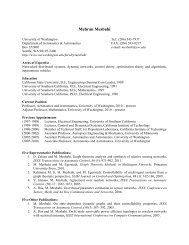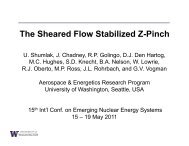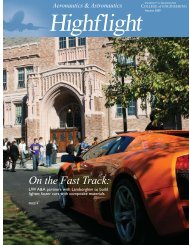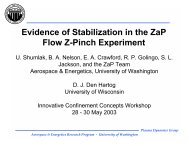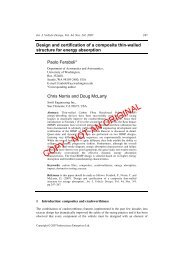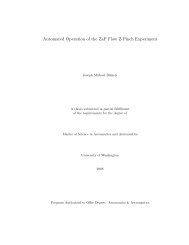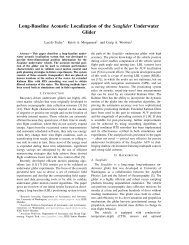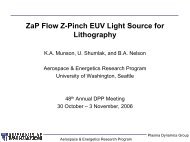Distributed Reactive Collision Avoidance - University of Washington
Distributed Reactive Collision Avoidance - University of Washington
Distributed Reactive Collision Avoidance - University of Washington
Create successful ePaper yourself
Turn your PDF publications into a flip-book with our unique Google optimized e-Paper software.
34<br />
Figure 4.5: Example <strong>of</strong> a borderline case for six vehicles where no conflict-free variablespeed<br />
maneuver exists. The circle is the edge <strong>of</strong> the allowable disk (radius v i,max ) and the<br />
blue regions are the collision cones, shown with all equal velocities, <strong>of</strong> magnitude greater<br />
than v i,max .<br />
Note that for large n, the small angle approximation can be used to simplify (4.15) to<br />
⎧<br />
⎪⎨<br />
‖˜r‖ ≥<br />
⎪⎩<br />
(n−1)(d<br />
„ sep+δ)<br />
vi,max<br />
«,<br />
arcsin v j,max<br />
v i,max < v j,max<br />
2(n−1)<br />
π<br />
(d sep + δ), v i,max ≥ v j,max ,<br />
(4.16)<br />
however the result is not actually conservative, so (4.15) should still be used for safety<br />
purposes. It is interesting to note though, that as n gets large, the bound approaches a linear<br />
relationship with n − 1. This makes intuitive sense in that as more vehicles are in a space,<br />
they must be spaced out more to ensure a safe trajectory exists between them.<br />
4.1.3 Heuristic Performance<br />
The guarantees provided by the previous maneuvers are ideal if one can ensure the vehicles<br />
always have enough warning <strong>of</strong> each other’s presence. However, some systems may not<br />
always be that capable. We know from the previous analysis that these requirements are<br />
conservative, so it may still be possible to deconflict the system, though not in a guaranteed



